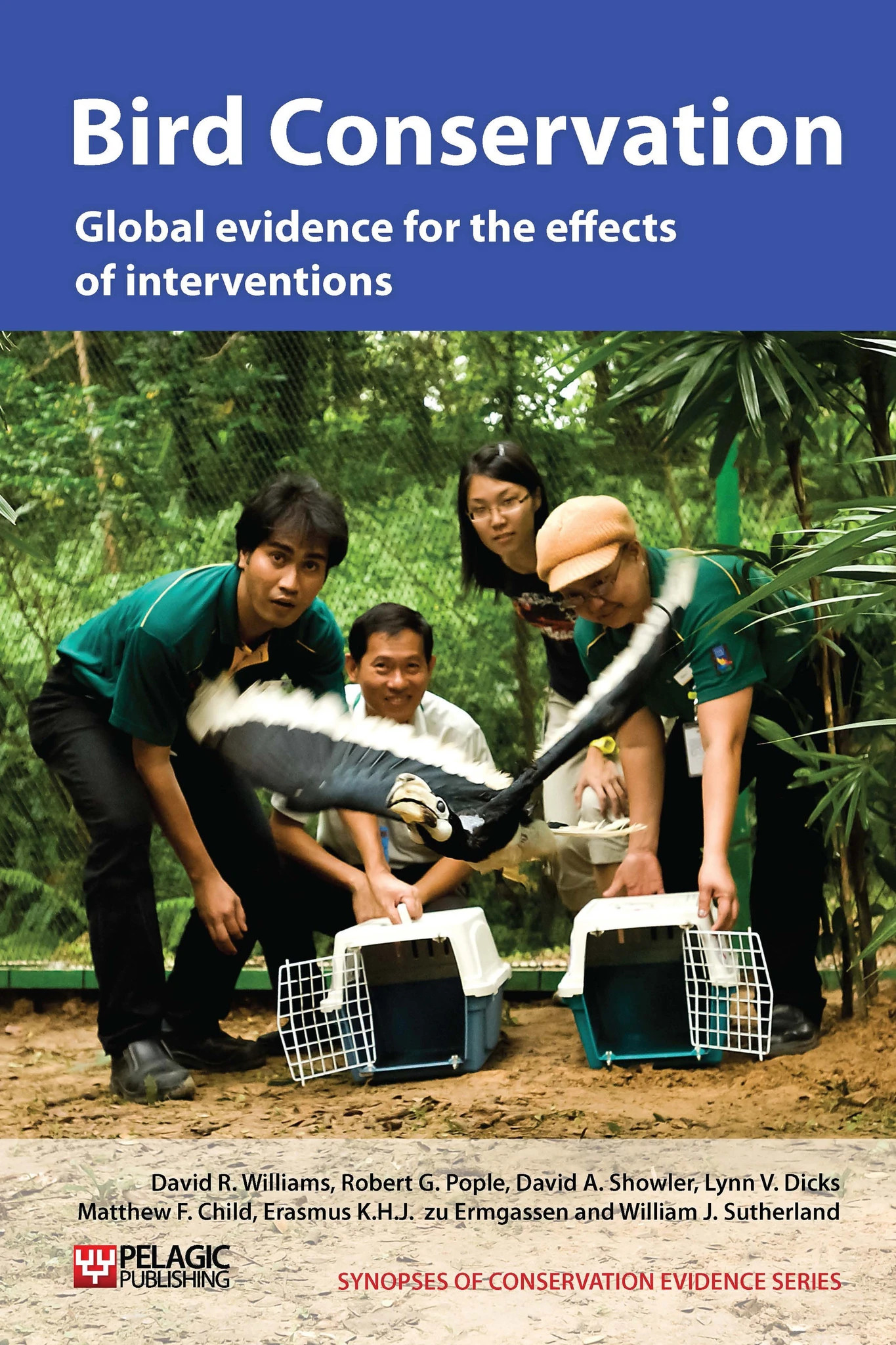Provide supplementary food for vultures to increase reproductive success
-
Overall effectiveness category Unknown effectiveness (limited evidence)
-
Number of studies: 4
View assessment score
Hide assessment score
How is the evidence assessed?
-
Effectiveness
30% -
Certainty
24% -
Harms
0%
Study locations
Supporting evidence from individual studies
A small before-and-after study in California, USA, between February 1971 and May 1973 (Wilbur et al. 1974) found that three Californian condors Gymnogyps californianus were raised during the study period, compared to only one in the preceding three years. The authors suggest that the only substantial difference between the two time periods was the presence of the feeding station, supplied with approximately one carcass a week, normally of mule deer Odocoileus hemionus. The authors note that a longer study would be needed to confirm to role of feeding in reproductive success. This study is also discussed in ‘Provide supplementary food to increase adult survival’.
Study and other actions testedA study in the Negev Desert, Israel, in April-August of 1989 and 1990 (Meretsky & Mannan 1999) found that a large (20-350 kg), irregularly supplied (twice a month) feeding station did not provided sufficient regular food for Egyptian vultures Neophron percnopterus feeding young, whereas a feeding station supplied daily with 5-10 kg of chicken did. This study is discussed in more detail in ‘Provide supplementary food to increase reproductive success’.
Study and other actions testedA before-and-after study in a woodland mosaic in north-eastern Greece (Vlachos et al. 1999) found that, following the establishment of a feeding station in 1987, the number of European black (cinereous) vultures Aegypius monachus overwintering and breeding in the study area increased significantly (overwintering population of 24 in 1984 vs. 59 in 1997; breeding population of 10 pairs in 1984 vs. 21 in 1997). The proportion of pairs successfully fledging young varied considerably but also increased over the study period, as did the number of fledglings produced annually (40-55% fledging success in 1984-1986, average of 47% success and 5 young fledged/year vs. 50-95% and an average of 75% and 12 young/year in 1987-1997). The feeding station was supplied year-round with cattle or horse carcasses every two weeks or so and was protected by a fence to deter mammalian scavengers.
Study and other actions testedA before-and-after study in southern Italy (Gustin et al. 2009) investigated the effect of a feeding station, active between February 2004 and September 2007, and found that Egyptian vultures Nephron percnopterus bred in small numbers until 2003 but only two to three non-breeding adults were seen in the area during 2004-7. Only a single vulture was seen at the station (in 2007), which was regularly used by corvids and raptors, discussed in ‘Provide supplementary food to increase reproductive success – Raptors’.
Study and other actions tested
Where has this evidence come from?
List of journals searched by synopsis
All the journals searched for all synopses
This Action forms part of the Action Synopsis:
Bird Conservation
Bird Conservation - Published 2013
Bird Synopsis





)_2023.JPG)














